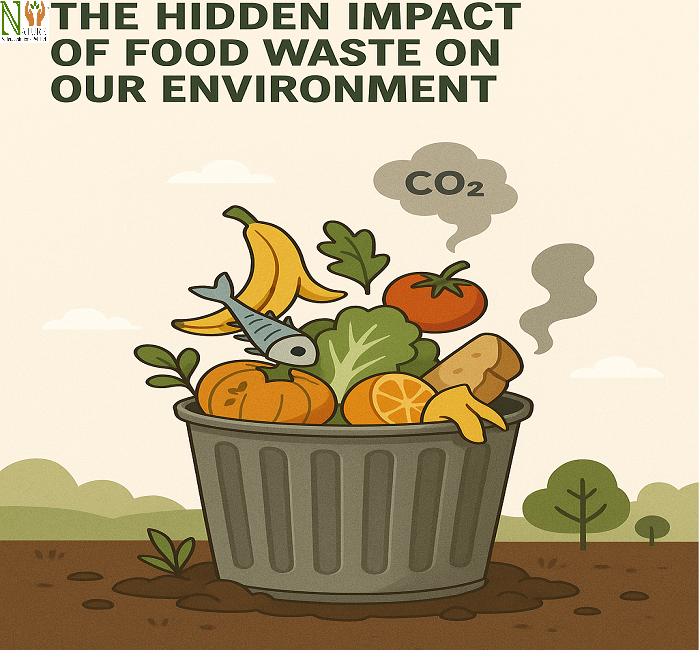Food is one of the most vital resources for human survival. Yet, millions of tons of it are wasted every year. What many people don’t realize is that food waste isn’t just a social or economic issue—it’s a major environmental concern.
From the moment food is grown to the time it is discarded, it consumes natural resources and contributes to environmental degradation. This article explores how food waste silently damages our environment and what can be done to reduce its impact.
What Is Food Waste?
Food waste refers to food that is grown, processed, and distributed but never eaten. It happens at all stages—from farms and factories to supermarkets, restaurants, and households. Spoiled produce, uneaten leftovers, overstocked shelves, and cosmetic standards are some of the many causes.

Environmental Costs of Wasted Food
1. Wasted Resources
Every piece of food requires land, water, energy, and labor. When food is wasted, all those resources are also wasted. Consider these facts:
- Producing one kilogram of rice takes about 2,500 liters of water.
- A single hamburger uses up to about 2,000 liters of water, including water for the cow’s feed.
- Millions of acres of forests are cleared for farming, only for part of the harvest to be thrown away.
This makes food waste a waste of Earth’s most precious resources.
2. Greenhouse Gas Emissions
Food waste contributes significantly to global warming. When food rots in landfills, it produces methane, a greenhouse gas that is 25 times more powerful than carbon dioxide.
According to the UN, if food waste were a country, it would be the third-largest emitter of greenhouse gases, after China and the USA.
The energy used to grow, harvest, transport, and refrigerate food also adds to carbon emissions. So, the environmental cost doesn’t stop at disposal.
3. Soil and Water Pollution
When food waste ends up in landfills, it not only creates gases but also produces leachate—liquid that can seep into the soil and contaminate water supplies. Moreover, the overuse of fertilizers and pesticides in mass agriculture (to meet demand) harms soil health, kills pollinators, and affects aquatic life through runoff.
4. Loss of Biodiversity
To grow more food, natural ecosystems like forests and wetlands are destroyed. This reduces biodiversity and forces many animals from their habitats. In turn, this imbalance can affect the food chain and damage the environment in the long term.
Why Do We Waste So Much?
Several reasons contribute to food waste:
- Overproduction: Farmers produce more than needed to meet market demands.
- Strict appearance standards: Misshaped fruits and vegetables are discarded for not looking “perfect.”
- Poor storage and transport: In developing countries, much food spoils before it reaches the market.
- Consumer habits: People often buy more than they need, cook large portions, and don’t use leftovers.
The Role of Individuals and Communities
- We all have the power to make changes. Here’s how:
- Plan meals and shop with a list to avoid overbuying.
- Store food properly to keep it fresh longer.
- Use leftovers creatively instead of throwing them away.
- Compost organic waste instead of sending it to landfills.
- Support local farmers and buy imperfect produce that is still nutritious.
What Governments and Industries Can Do
- Implement better food storage and transportation infrastructure.
- Educate consumers about expiration labels (like “best by” vs. “use by”).
- Offer tax incentives for food donations.
- Invest in food recovery programs that collect surplus food and redirect it to those in need.
- Enforce regulations that encourage businesses to reduce waste and report their food waste statistics.
A Global Call to Action
Reducing food waste is one of the easiest and most effective ways to fight climate change and conserve resources. According to the FAO, if food waste were reduced by just 25%, it could feed 870 million hungry people. By acting now, we can reduce pressure on land, water, and air—and help build a healthier planet for future generations.
Also read:-
